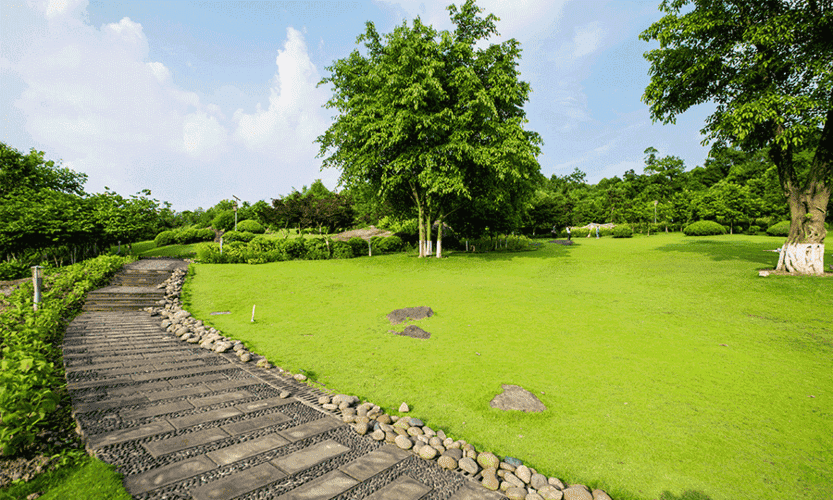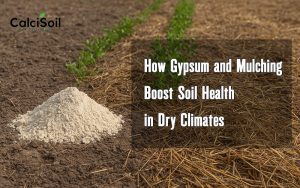
Effect of Agricultural gypsum for lawn
Lawns are a popular method of urban and residential landscaping. With the advancement in urban architecture, the use of lawn landscaping is increasingly popular. However, awareness of the negative environmental impact of lawns is growing. Therefore, in addition to using this method for beautifying space, we must also consider solutions for its maintenance and preservation. depending on the type of grass, planting season, maintenance type, and other environmental factors. In this article, we specifically examine the effect of gypsum for lawn to reduce its problems.
Signs that your lawn needs a gypsum treatment
One of the ways to reduce lawn problems is to use gypsum. However, to use gypsum for lawn correctly, we must first examine signs that indicate the need for gypsum for lawn. Here are some signs that your lawn may need a gypsum treatment.
Compacted soil. If your soil is compacted, it can be difficult for water and nutrients to penetrate the roots of your grass. Gypsum can help to break up compacted soil and improve soil structure.
Low calcium levels. If your soil has low levels of calcium, it can affect the growth and health of your grass. Gypsum is a good source of calcium and can help to improve plant growth.
High sodium levels. If your soil has high levels of sodium, it can be toxic to your grass. Gypsum can help to counteract excessive saline levels and improve soil conditions.
Heavy clay soils. If you have heavy clay soils, gypsum can help to improve soil structure. And make it easier for water and air to move through the soil.
Soil crusting. If your soil is prone to crusting, gypsum can help to prevent water runoff and improve soil structure.
It is important to note that gypsum is not a universal solution for all lawn problems. And its effectiveness depends on the specific needs of your lawn. It is recommended to test your soil’s sodium and calcium levels before applying gypsum. And to consult with a lawn care professional to determine if a gypsum treatment is necessary.
When to use agricultural gypsum for lawn
According to the sources, gypsum can be applied to your lawn any time of the year. Depending on the needs of your particular lawn. It is recommended to apply gypsum two to three times a year. And for established lawns, the best results are found when gypsum is applied after a lawn aeration. The aerator removes small plugs of soil from your lawn, creating holes about the size of your small finger. If gypsum is applied directly after aeration, it enters those holes and has direct contact with soil in those holes.
Applying agricultural gypsum as a surface application is less effective. It is also important to note that before applying gypsum, it’s recommended to test your soil’s sodium and calcium levels. To determine if a gypsum treatment is necessary. Gypsum can help to reduce soil compaction, improve soil structure, increase air movement, prevent water runoff, counteract excessive saline levels. And also neutralize the mineral salts in pet urine. It is also safe for pets and workers can handle the product without gloves or masks.
Applying gypsum and grass seed at the same time
According to the search results, it is possible to apply gypsum and grass seed at the same time. However, it’s important to note that the effectiveness of this method may depend on the specific needs of your lawn. Some sources recommend applying gypsum before seeding to improve soil structure and increase water infiltration. while others suggest applying gypsum after seeding to help the seedlings establish roots.
Additionally, it is recommended to apply seed at the recommended seeding rate. And also avoid over-fertilizing, as this can kill new seedlings when they sprout. Finally, it is not necessary to cover lawn seed when planting. for covering seed, it should be done with peat moss, fluffy topsoil, clean straw at maximum of 1/4inch thick. Or a seed covering per package directions.
How to use gypsum for lawn.
Here are the steps to use agricultural gypsum for your lawn.
– Test your soil’s sodium and calcium levels to determine if a gypsum treatment is necessary.
– Apply gypsum two to three times a year, depending on the needs of your particular lawn.
– For established lawns, apply gypsum after a lawn aeration to ensure direct contact with the soil.
– Apply half the gypsum in one direction and the rest in a crisscross pattern for even coverage.
– Avoid over-fertilizing when applying seed, as this can kill new seedlings when they sprout.
– Apply seed at the recommended seeding rate.
– Avoid applying too much lime, as this can be harmful to your lawn.
– Apply gypsum to improve soil structure, reduce soil compaction, increase air movement, prevent water runoff, counteract excessive saline levels. And also to neutralize the mineral salts in pet urine.
– Use gypsum to replace the salt, heal the grass, and encourage new growth.
– Use gypsum to break up compacted soil and improve soil structure.
– Use gypsum to increase water infiltration and prevent soil crusting.
– Apply gypsum any time of the year, depending on the needs of your particular lawn.
– Apply gypsum using a lawn spreader for even coverage.
– Test your soil’s pH level before applying gypsum to determine if it is necessary.
– Consult with a lawn care professional to determine if a gypsum treatment is necessary. And to ensure that you are using gypsum correctly.







